
Experience it in game
Play through the battle yourself in the immersive Company of Heroes 3 campaign.
 Experience the dynamic campaign in game with
Experience the dynamic campaign in game with 
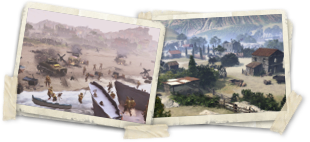 Find out more
Find out moreThe Libyan port of Tobruk became a key strategic position for the Allies during World War Two (WW2). But in 1941, the ‘desert fox’ Erwin Rommel and his Afrikakorps had it well and truly surrounded.
The only thing stopping Rommel from capturing the city was a modest garrison of Australian, British and Commonwealth troops, who defended the position bravely in caves, tunnels and trenches. These plucky ‘Rats of Tobruk’ fought something of a David vs. Goliath struggle against their Axis adversaries for 241 days, despite having only meagre supplies, ammunition and support.
The result was one of the first tactical Allied victories of the war – and arguably a turning point in the entire conflict. This is the story of the Battle of Tobruk.
1940 was a dark year for the Allies in World War II. The German war machine had torn through Western Europe as far as the English Channel, and began pummelling British cities in The Blitz.
Over in North Africa, the British still controlled the Suez Canal in Egypt – an essential Allied shipping route – but the Axis were closing in.
On paper, it should have been a walkover for the Italians. But Marshall Rodolfo Graziani’s forces launched a botched and ineffectual invasion. They advanced only around 60 miles to the port of Sīdī Barrānī before stopping, awaiting engineers to construct the so-called ‘Victory Road’ along the coast.

Group of Italian officers near Tobruk in autumn 1941
“The British had got to Benghazi, and had defeated the Italians. Operationally, the best thing to do would be to protect Cyrenaica from counterattack and push onto Tripoli. But they had a political requirement to go to Greece, where they were quickly outmanoeuvred.”
Dr. Robert Lyman, author of Tobruk: The Longest Siege
Britain’s newly captured Libyan cities fell like a deck of cards. Rommel took El Agheila on March 24th and Mersa Bréga soon after. Despite orders from his high command to hold back, he then pushed further forward, and overran Benghazi by the 2nd of April.
The Allies beat a hasty, chaotic retreat back along the coast to Egypt, losing tanks and men along the way.
In an especially audacious move, Dr Lyman notes that Rommel next cut across the desert of Cyrenaica on a trail “traditionally used only by camel herders”, instead of following the expected coastal route. This cut off the British forces and sent them into further disarray.
The Allies’ immense progress in Libya was rendered worthless. By April 11th, almost all of Cyrenaica was back in Axis hands.
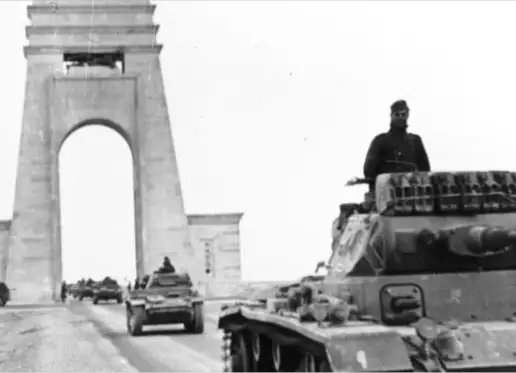
Bundesarchiv, Bild 101I-782-0009-01A / Moosmüller / CC-BY-SA 3.0
Tobruk is located on the north-eastern coast of Libya, just over 620 miles (or 1,000 kilometres) east of the capital, Tripoli.
Tobruk formed a significant foothold in North Africa during WW2 for a number of reasons.
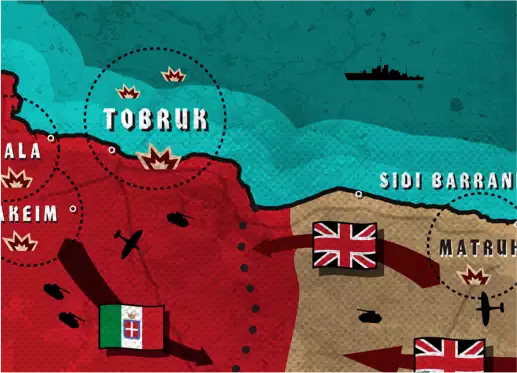

Experience it in game
Play through the battle yourself in the immersive Company of Heroes 3 campaign.
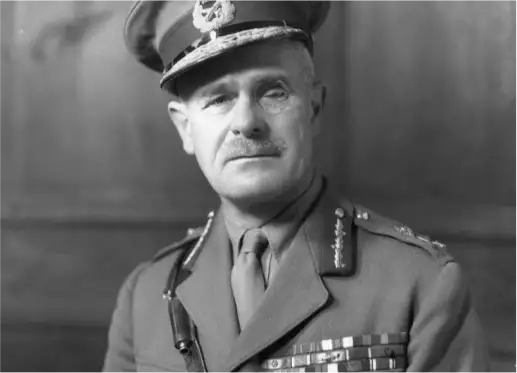
General Sir Archibald Wavell commanded the Allied forces in Egypt, as well as the East African fronts against the Italians.
It was his decision to strike first against Graziani’s Italian forces – and he was highly successful in doing so. However, he met his match in the desert fox Erwin Rommel, whose audacious tactics sent Wavell’s forces into disarray. He was later replaced as commander in North Africa, and redeployed to the fight in southeast Asia.
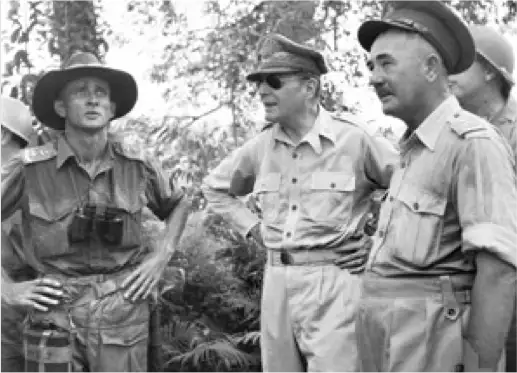
The Australian commander of the forces at Tobruk, Morshead was a former schoolmaster and veteran of World War I, known for enforcing discipline. Swearing was not permitted on his watch, and his reputation for running a tight ship earned him the nickname ‘Ming the Merciless’. He was nonetheless a highly respected leader.
While the odds were against the Rats of Tobruk, Morshead would not accept defeat lying down: “There will be no Dunkirk here”, he said. “If we should have to get out, we shall fight our way out. There is to be no surrender and no retreat.”
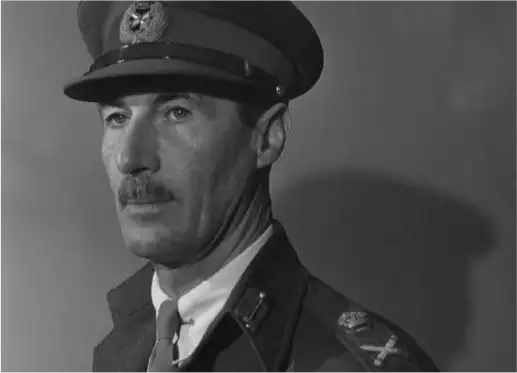
Lieutenant-General Robert Scobie’s 70th Infantry Division arrived in Tobruk to relieve Morshead’s Australian divisions, and he would later take control of the besieged forces. A multi-talented individual, Scobie was also a Scottish international Rugby Union player.
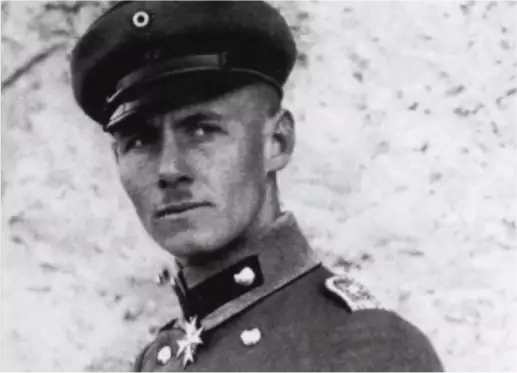
Rommel was known for his wily tactical genius and audacious offences in the desert, which sometimes defied orders.
“The OKW, the military high command, never believed Rommel could get into Egypt, his job was simply to keep the British army occupied. But Rommel wanted to get to Cairo and make a name for himself”.
- Dr Lyman
As a hands-on commander who impressed those he came up against, Rommel won the admiration of many Allied troops and officers. His successes in North Africa would make him a celebrity.
He was, however, less well-liked by his own German and Italian forces. With Rommel, diplomatic niceties went out of the window when it came to dispatching orders to his Italian generals!
His tactics in North Africa included capturing British depots to improve his supply lines – and that’s why he wanted Tobruk.
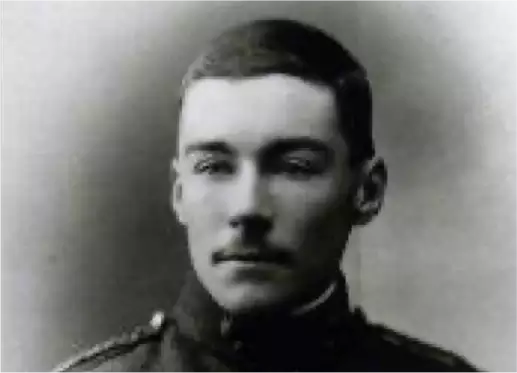
Philip Neame was a high-ranking British Army officer in charge of a large but undermanned region of Cyrenaica. He commanded the Australian 9th Division and the British 2nd Armoured Division, both of which were forced into a hasty retreat at the onset of Rommel’s panzers. Neame was captured and sent to a POW camp in Italy.
It is said that Neame carries the distinction of being the only person ever to be awarded a Victoria Cross and an Olympic Gold Medal – which he won in a team shooting event at the Paris 1924 games.

A famed Australian soldier who won the Victoria Cross for his valour at Tobruk, Edmondson fought off two Axis troops despite wounds to the neck and stomach – saving an officer’s life in the process.
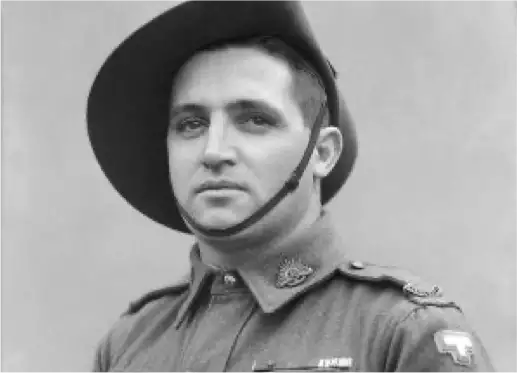
An icon in his native Australia, Derrick came from a humble background in farming, and showed outstanding courage on the battlefield at Tobruk.
The action at Tobruk was centred around a 30-mile perimeter of the port, flanked to the north by the Mediterranean Sea, and the south by a number of cliffs and escarpments.
Impressive trenches, tunnels and other concrete fortifications left by the Italians were key to the Allies’ success. Caves in the vicinity also helped shelter soldiers from the heat, and hide from enemy fire.
Along the perimeter, Allied infantry defended trenches and strongholds. Outside the barbed wire, they patrolled aggressively against the Axis enemy, supported by tanks and guns to the rear.
Find out more with our in-depth look at ‘The Siege of Tobruk in numbers’.

The Rats of Tobruk fought not only against German and Italian troops, but against the climate and landscape too.
Then, there were flies and fleas that were endemic among the troops, and the fact that the natural water available was quite oily. Allied soldiers initially thought the water supply had been poisoned, owing to its petrol-like taste.
The Allies were supplied each night by ship, which brought food and water and took away the wounded. This was colloquially known as ‘the spud run’ – and was a lifeline to the besieged Allies.
But even with the spud run, rations were poor at best. One account noted:
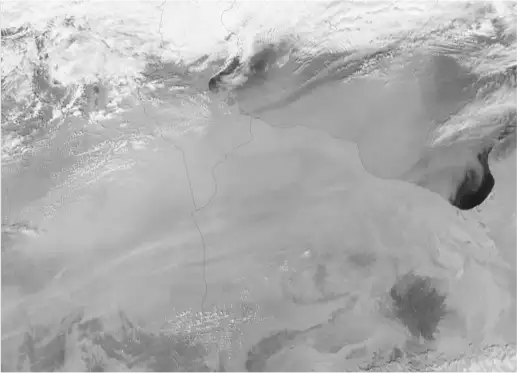
Dust storm over Libya
Despite the appalling conditions, those battling to defend Tobruk maintained high morale. In their spare time they played cards, wrote letters and shared stories, as well as swimming in the sea – a dangerous pastime, as they were routinely targeted by German stukas.
It was, as Dr Lyman wryly notes, akin to ‘extreme camping’.
Back in Egypt, the British forces were planning their relief operations. A convoy of more than 200 tanks arrived in Alexandria, and General Wavell came under pressure from Churchill to engage Rommel. Operation Brevity would be his initial attempt to do so.
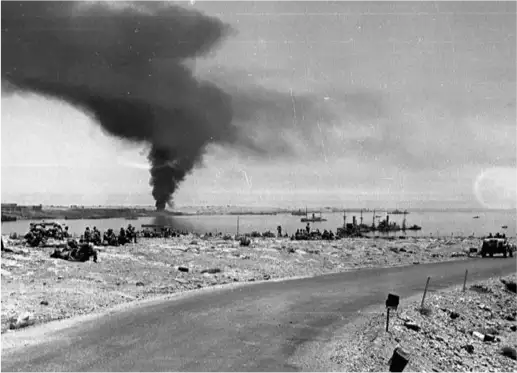
Bundesarchiv, Bild 101I-786-0301-32 / Dörner / CC-BY-SA 3.0
Behind the perimeter in Tobruk, the situation was dire. The Australian forces had held out for many months in appalling conditions, and their health was deteriorating rapidly. The Australian government subsequently negotiated their withdrawal with Auchinleck.
On a moonless week in August 1941, the Rats of Tobruk were withdrawn from the siege. They were replaced by Polish, Czech and British brigades, and Leslie Morshead handed over command to Ronald Scobie.
Many of these brave soldiers went on to fight in Asia – and many never returned home.
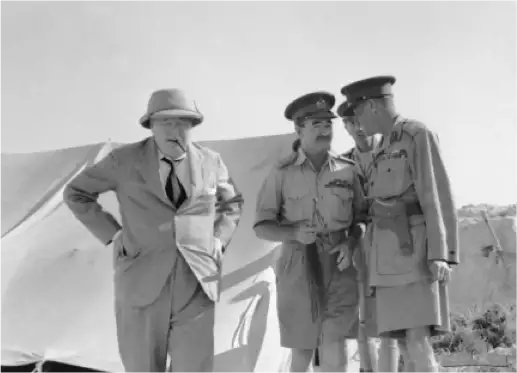
After 241 days, this notorious chapter in the battle of Tobruk was over – but the fighting was soon to reach new heights. Rommel would create a new front to the west of Tobruk at Gazala. There, he would decisively defeat the Allies and overrun the port in the space of a day.
The Allies fled in a state of total panic and disarray back to El Alamein – just 70 miles from the crucial Allied stronghold of Alexandria, and worryingly close to the Egyptian capital of Cairo. There, British officials burned documents and retreated to the train stations, believing Egypt, Suez and the precious oilfields of the middle east were finally lost to Axis control.
But the Allies tactical victory at Tobruk was more important than they realised.
The 8th Army had survived. Next, it dug in, regrouped and fought two gruelling battles against the Axis powers at El Alamein, defeating Rommel in North Africa – and pushing onwards into Italy. Just a few years later, the German war machine was being throttled from the south, east and west.
While Tobruk may sometimes be overshadowed by more decisive Allied victories in WW2, Dr Lyman notes how important it is to think about what would have happened had the defenders of Tobruk not held their ground, and the British Army not lifted the siege:
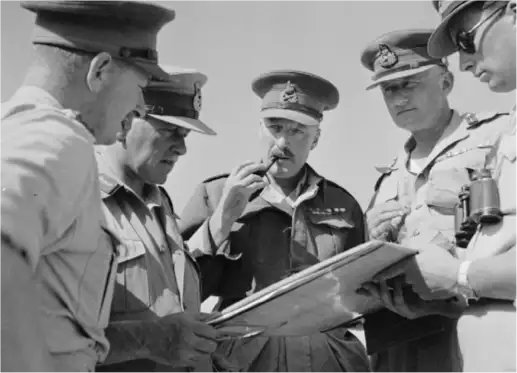
The Allies were successful at Tobruk, not because of a decisive victory against Erwin Rommel, but because they were able to hold the city for months, and lift the siege on their own terms. This enabled the British Army to regroup at El Alamein – and finally defeat Rommel.
Almost 6,000 Allied troops were killed or wounded at Tobruk, including British, Australian, Indian and Polish soldiers. More than 500 were also missing in action (MIA).
According to the Rats of Tobruk Association, 17 Australian ‘Rats’ and one Polish veteran were still living in Australia at the end of 2020. Most of them had reached the age of 100.
©Relic Entertainment. All rights reserved. Developed by Relic Entertainment. Entertainment, the Relic Entertainment logo, Company of Heroes and the Company of Heroes logo are either registered trademarks or trademarks of Relic Entertainment. Relic Entertainment is registered in the U.S. Patent and Trademark Office. All other trademarks, logos and copyrights are property of their respective owners.